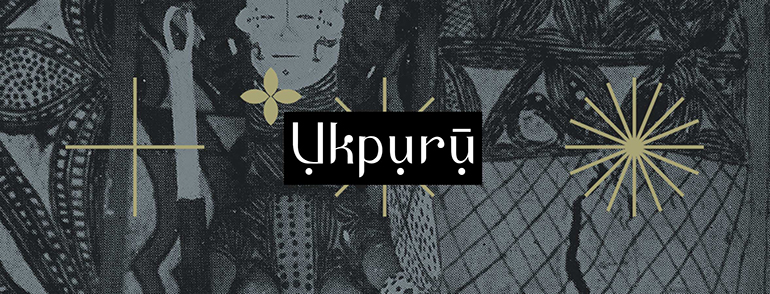 A together, ten pyramid-like structure photographed by G. I. Jones in 1935. MAA Cambridge.
A together, ten pyramid-like structure photographed by G. I. Jones in 1935. MAA Cambridge.
In the neighbourhood of Ngwo, Nsude and Agbaja [Ọwa] in the Udi Division, at intervals, the people construct quaint circular pyramids. Clay is used for the purpose. The bases are about sixty feet in circumference and two to three feet in height. Then another section is laid about forty-five feet in circumference and so on until the pinnacle is reached. They are erected to the honour of Ala and to indicate ownership of land.
 G. I. Jones in front of the structure, 1935. MAA Cambridge.
G. I. Jones in front of the structure, 1935. MAA Cambridge.
Two rows of five are built parallel to one another which means that 'Ala' gives children with the right hand and the left. The god (or goddess) dwells in the pinnacle and, thus, is in a position to detect any person committing evil. Such a person will be caught by the god and secured with shackles; these are represented by small sticks inserted in the clay near the tops of the pyramids.
— G. T. Basden (1912). Among the Ibos of Nigeria. p. 109.
[There were other pyramids, sometimes larger, in other areas of Igboland such as around the Abam. The ten Ugwu Uto pyramids no longer stand, although it seems as though their original site is known.]If you look closely at the shape of these mounds, they look somewhat like stylised breasts with prominent nipples at the top. It is also interesting to note that the ten mounds were aligned five-by-five in two rows, so each was paired up. There is an established Igbo tradition of using mounds to represent feminine divinities like Akwali of Öka, could these pyramids actually be elaborations on the mound, along with the other supposed pyramids in other Igbo areas?
"Two rows of five are built parallel to one another which means that 'Ala' gives children with the right hand and the left."

No comments:
Post a Comment